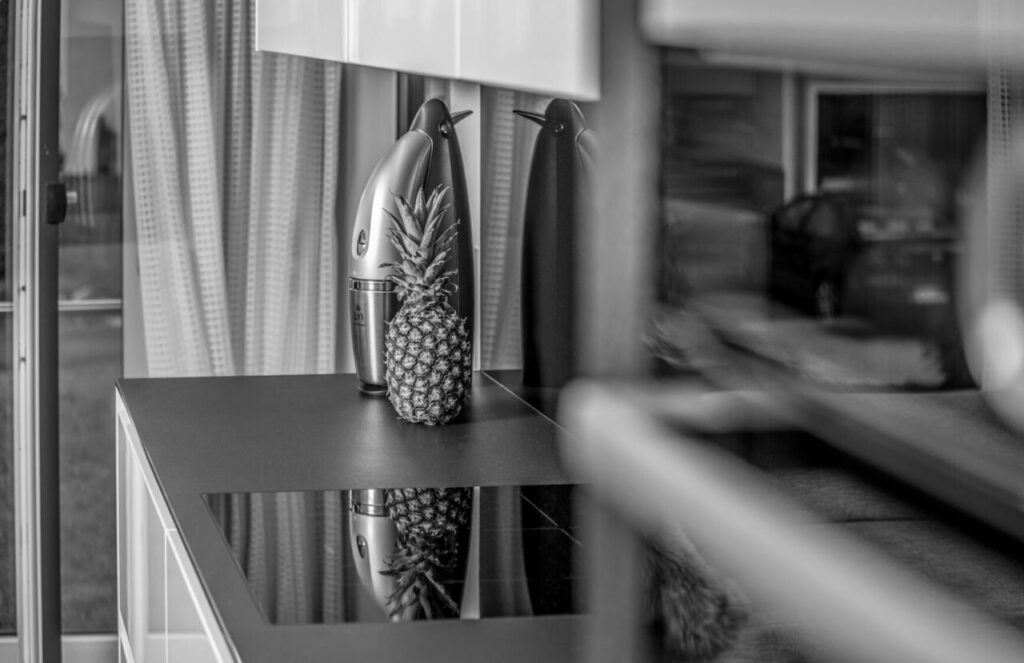If you’ve ever watched those fancy cooking shows, you’ve probably seen the presenter use an induction burner or stovetop. These slick, streamlined kitchen appliances are a very tempting addition to any kitchen renovation.
However, just because these stovetops are beautiful and efficient doesn’t mean they’re necessarily right for your home and lifestyle.
Like any appliance, there are pros and cons to these sleek options to consider before adding one to your kitchen.
Read on as we dig into the pros and cons of induction stovetops, helping you make an informed decision.
Induction Cooking: How it Works
Instead of direct heat from gas or electricity, induction cooking uses electromagnetic energy to create heat.
When you use cookware that works with this type of stovetop, the magnetic field heats up the area where you’ve placed your pot or pan.
In contrast, gas or electric-powered stovetops first heat up a burner, transferring the heat to the cookware, resulting in some energy loss.
Pros of Induction Stovetops
1. Energy Efficiency
Without question, energy efficiency is a massive benefit of this type of stovetop.
As noted above, the pot is heated directly rather than relying on a transfer of heat from the burner to the pot, which is typical of other types of stovetops.
This means your food gets cooked more quickly, with less energy needed.
2. Precision and Control
There’s a saying that’s been around for many years:” A watched pot never boils.” Well, with an induction stovetop, that saying no longer applies!
Temperature adjustments are instant, giving you precise control of the temperature of your food. Also, because heat is distributed evenly, you won’t need to worry about cold spots or burnt food.
3. Safety Features
Many models have automatic shut-off features when cookware is removed from the surface to reduce the risk of accidental burns. The cooking surface stays cool to the touch, even if the cookware is hot.
4. Easy to Clean
It can be a pain to clean up after cooking, but it must be done to keep a sanitary kitchen. Induction stovetops make this necessary task much easier.
No grates or burners to maneuver around…simply wipe off the smooth, flat surface, and you’re done.
In addition, because the stovetop itself doesn’t get hot, you won’t likely have to worry about burnt spills.
5. Sleek and Modern Design
The sleek, modern design of induction stovetops is a good option for kitchens with contemporary aesthetics.
Their smooth, glass-ceramic surfaces contribute to a contemporary look, and they’re available in many styles and sizes to suit different kitchen layouts.
Cons of Induction Stovetops
1. Cookware Compatibility
Induction stovetops require magnetic cookware to work. You’ll need to buy new cookware if what you currently have doesn’t suit this type of stovetop.
2. Higher Initial Cost
You will pay more for an induction stovetop than you would for either gas or electric models. Although you will save in energy costs over time, the large upfront cost of these appliances will take time to recoup.
3. Learning Curve
Learning how to cook on an induction stovetop will take some time. The quick heating feature and the precise control over temperature adjustments require closer attention.
The result could be that you need to modify your cooking techniques to take advantage of the quick heating and efficiency of these appliances.
4. Power Supply Limitations
Induction stovetops rely on a continuous supply of electricity. Unlike traditional electric stovetops, when the power goes out, your stovetop is instantly cool, and dinner is canceled. There’s no residual heat to continue cooking the food. Takeout anyone?
5. Noise
Some homeowners with induction stovetops report hearing a buzzing or humming sound when using their appliance, especially when it’s set at higher power levels.
This is typically due to the interaction of the magnetic process with the cookware, which can be different depending on the type of pots and pans used.
Although induction stovetops are a fantastic, energy and time-saving addition to any home, it’s important to understand the pros and cons of adding this type of appliance to your home.
Finally, when deciding if an induction stovetop is right for you, consider your cooking habits, kitchen layout, and your budget.
Kid-Friendly Kitchen Ideas: Making Cooking and Dining Fun for the Whole Family


